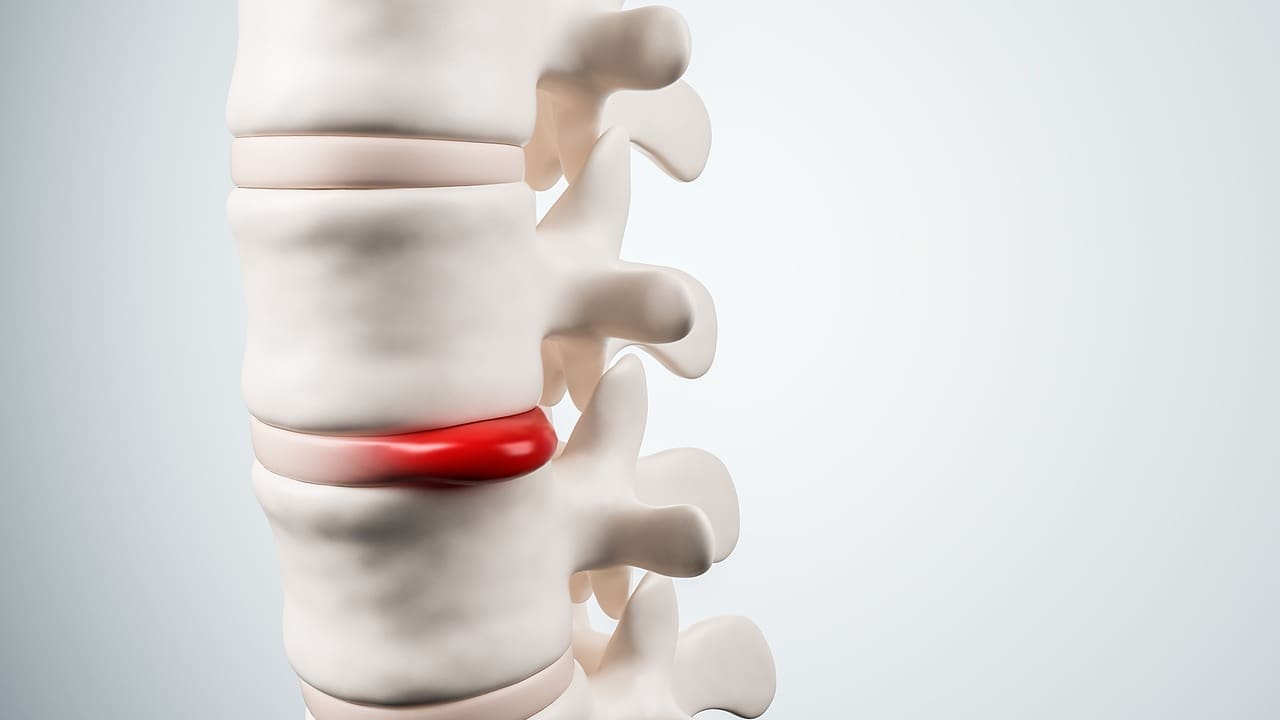Last Updated on November 26, 2025 by Bilal Hasdemir

Sciatica affects millions of people around the world, causing severe pain that can make daily activities difficult.
At Liv Hospital, we understand how deeply sciatica impacts your life. That’s why we offer the epidural shot for sciatica pain — a proven treatment that helps reduce inflammation, ease pain, and improve mobility.
An epidural shot for sciatica pain delivers targeted relief by sending medication directly to the affected nerves. Many patients start feeling better within two weeks of treatment.
In this article, we’ll explore what causes sciatica, how epidural injections work, and the key benefits and risks. Our goal is to help you make an informed decision about the best treatment for lasting relief.
Key Takeaways
- Epidural steroid injections can provide significant relief from sciatica pain.
- This treatment is minimally invasive and can be effective within 2 weeks.
- Liv Hospital offers personalized care and advanced treatment options.
- Understanding the causes and treatment options for sciatica is key for managing it well.
- Epidural steroid injections are a valuable treatment option for many patients.
Understanding Sciatica and Its Impact

Sciatica pain is a symptom, not a diagnosis. It points to a deeper issue that needs fixing. It affects millions globally, causing a lot of discomfort and disrupting daily life.
What Causes Sciatica Pain
Sciatica is a symptom of a deeper problem affecting the sciatic nerve. This nerve is the longest in the human body. When it gets irritated or compressed, it can cause many symptoms. Common reasons include:
- Herniated Discs: When the soft inner gel of the disc leaks out, it can press on the sciatic nerve.
- Spinal Stenosis: Narrowing of the spinal canal can put pressure on the sciatic nerve.
- Piriformis Syndrome: The piriformis muscle can compress or irritate the sciatic nerve.
- Spondylolisthesis: A condition where one vertebra slips forward over the bone below it, potentially compressing the sciatic nerve.
Common Symptoms and Diagnosis
The symptoms of sciatica vary but often include sharp, shooting pain. This pain goes from the lower back to the legs. You might also feel numbness, tingling sensations, and muscle weakness in the affected leg. Diagnosing sciatica involves:
- Medical History: Reviewing the patient’s medical history to identify possible causes.
- Physical Examination: Conducting a physical exam to check muscle strength, reflexes, and pain distribution.
- Imaging Tests: Using MRI or CT scans to see the spine and find any problems causing the sciatica.
Knowing the causes and symptoms of sciatica is key for proper diagnosis and treatment. By finding the root cause, doctors can create a treatment plan. This plan aims to reduce sciatica pain and improve the patient’s life quality.
What Is an Epidural Shot for Sciatica Pain?

Sciatica pain can be very hard to deal with. But, epidural steroid injections offer a good chance for relief. These shots are a common way to treat sciatica. This condition causes pain that goes from the lower back to the legs.
Components of Epidural Steroid Injections
Epidural steroid injections have two main parts: corticosteroids and a local anesthetic. Corticosteroids are strong anti-inflammatory agents. They help reduce swelling and irritation around the sciatic nerve.
By cutting down inflammation, corticosteroids can lessen pain and discomfort from sciatica. The local anesthetic numbs the area around the nerve. This combo is key for managing sciatica pain, tackling both inflammation and pain signals.
“The use of epidural steroid injections has been shown to be effective in reducing pain and improving function in patients with sciatica.”
How Epidural Injections Target Sciatic Pain
Epidural steroid injections are given right next to the spinal cord and nerve roots. This targeted method ensures the medication hits the right spot. It reduces inflammation and numbs pain, greatly improving life for those with sciatica.
When thinking about epidural for sciatica, remember these shots are part of a bigger treatment plan. They’re suggested when other treatments don’t work well enough. Before looking at more serious surgery options.
The Science Behind Epidural Steroid Injections
It’s important to know how epidural steroid injections work to understand their role in treating sciatica. These injections use corticosteroids to fight inflammation and local anesthetics to numb the area. This mix helps in managing sciatica pain.
Anti-inflammatory Mechanism
Corticosteroids in these injections are key in reducing inflammation around the sciatic nerve. They help lessen swelling and irritation that cause pain. This action is vital for healing and easing pressure on the nerve.
The reduction in inflammation helps not just in easing pain but also in treating the root cause of sciatica. Corticosteroids stop the production of inflammatory substances. This breaks the cycle of inflammation and pain.
Pain Signal Disruption
These injections also contain a local anesthetic to provide quick pain relief. The anesthetic numbs the area around the sciatic nerve. This stops pain signals from reaching the brain, giving patients relief from sciatica pain.
The combination of corticosteroids and anesthetics in epidural injections offers a two-pronged approach to pain management. Corticosteroids work on inflammation over time, while anesthetics provide immediate pain relief. This makes the treatment more effective.
Understanding how epidural steroid injections work helps patients grasp the logic behind this treatment. It aids in making informed decisions about their care.
Effectiveness of Epidural Shot for Sciatica Pain: Clinical Evidence
Epidural steroid injections are seen as a good treatment for sciatica pain. They are supported by clinical evidence. We look at the latest research to see how well they work.
Success Rates from Recent Studies
Recent studies show that epidural steroid injections help a lot of people with sciatica pain. The success rates are different, but many patients see big improvements.
- A study in the New England Journal of Medicine found that these injections greatly reduce pain for sciatica patients.
- Another study showed that up to 75% of patients see big improvements in their symptoms after getting these injections.
Timeline for Pain Relief
How long it takes to feel better after an epidural steroid injection varies. But, many people start to feel better in a couple of weeks.
- Initial Relief: Some feel better in a few days because of the local anesthetic in the injection.
- Sustained Relief: The steroid part takes longer to work, usually giving lasting relief in two to four weeks.
Knowing the success rates and how long relief lasts helps doctors tell patients what to expect from epidural steroid injections for sciatica pain.
When to Consider Epidural Injections in Your Treatment Journey
Epidural injections can help with sciatica pain when other treatments don’t work. Finding the right treatment for sciatica can be tough. Knowing when to try epidural steroid injections is key.
After Conservative Treatments Fail
First, doctors usually try conservative methods like physical therapy and medicine. But, some people don’t get enough relief. That’s when epidural steroid injections can help.
These injections put anti-inflammatory medicine right where it’s needed. This can greatly reduce pain and swelling.
A study in the Journal of Pain Research showed a big difference. Patients with injections felt less pain and could move better than those without.
| Treatment Approach | Success Rate | Average Pain Reduction |
| Conservative Management | 40% | 30% |
| Epidural Steroid Injections | 70% | 60% |
Before Considering Surgery
Epidural injections can also be a step before surgery. They can help avoid surgery’s risks or delay it. Sometimes, injections can even make surgery unnecessary.
For more on epidural injections for back pain, check Pain Regen’s blog. It has helpful tips and insights.
In summary, epidural steroid injections are a good choice for sciatica pain. They’re best after other treatments fail and before surgery. Understanding when to use them helps patients make better treatment choices.
Who Benefits Most from Sciatica Epidural Injections
Epidural steroid injections are a promising treatment for sciatica. They are not for everyone, but some people see big improvements.
Ideal Candidates for Treatment
Those with acute or subacute sciatica, like those with herniated discs or degenerative disc disease, often see great results. The presence of inflammation is key for this treatment’s success. People with severe pain that affects their daily life are also good candidates.
A study in the Journal of Neurosurgery: Spine found that many patients are happy with this treatment. It helps with pain and improves function.
“The use of epidural steroid injections has been shown to provide significant pain relief and improvement in functional ability for patients with lumbar disc herniation.”
Conditions That Respond Best
Epidural steroid injections work best for conditions with nerve inflammation and irritation. Here’s a table of the best conditions for this treatment:
| Condition | Response to Epidural Steroid Injections |
| Lumbar Disc Herniation | Highly effective in reducing pain and inflammation |
| Degenerative Disc Disease | Effective in managing chronic pain and improving function |
| Spinal Stenosis | Can provide significant pain relief and improved mobility |
In summary, epidural steroid injections are a valuable option for sciatica. They help those with specific conditions. Knowing who benefits most helps doctors give better care.
The Epidural Injection Procedure Explained
If you have sciatica, knowing what happens during an epidural injection can help a lot. We know it’s scary to think about a medical procedure. That’s why we’re here to walk you through every step of the epidural injection process.
Preparation Before the Procedure
Before the epidural injection, our team will get you ready. This includes:
- Looking at your medical history to see if you’re a good candidate for the injection.
- Talking about any medicines you’re taking and telling you which ones to stop or keep taking before the procedure.
- Giving you instructions on how to get ready for the day of the procedure, like what to eat or wear.
What to Expect During the Injection
During the epidural injection, you’ll lie on your stomach on a table. The steps are:
- The area where the injection will be made is cleaned and numbed to make it less painful.
- The doctor uses X-ray imaging to guide the needle to the right spot around the nerve.
- A mix of corticosteroid and anesthetic is then injected into the space around the nerve.
Recovery and Aftercare
After the procedure, you’ll be watched for a bit to see if you have any immediate reactions. We suggest:
- Having someone drive you home because you might feel a bit drowsy.
- Resting for the rest of the day and avoiding hard activities for a few days.
- Following a care plan that might include physical therapy or exercises to keep the benefits of the injection.
Here’s a table that shows the benefits and possible side effects of epidural injections:
| Aspect | Description | Details |
| Benefits | Pain Relief | Many patients see a big drop in sciatica pain. |
| Minimally Invasive | It’s a way to avoid surgery in some cases. | |
| Potential Side Effects | Common | You might feel some mild discomfort or a temporary increase in pain. |
| Rare | But very rare, you could have an infection, nerve damage, or an allergic reaction to the medicine. |
By knowing about the epidural injection procedure, you can make better choices about your treatment. If you have any more questions or worries, our team is here to help and support you every step of the way.
Multiple Injections and Long-Term Management
For those with ongoing sciatica pain, more than one epidural injection might be needed. Sciatica pain can be hard to manage. Epidural injections are a valuable option, but some may need ongoing care.
When Repeat Injections Are Recommended
When the first injection helps a lot but only for a short time, more injections might be suggested. Doctors look at how severe the pain is, how well the first injection worked, and any other health issues that might be causing pain. They use these factors to decide if more injections are needed.
Some people might see their symptoms come back over time. For them, more injections can help keep the pain away and make life better. How often these injections are needed can vary a lot, depending on the person and their condition.
Extraepineural vs. Intraepineural Approaches
The way epidural injections are given can affect how well they work. There are two main methods: extraepineural and intraepineural injections. Extraepineural injections put medicine outside the epidural space, while intraepineural injections put it inside. Which method is best depends on the patient’s condition and the doctor’s opinion.
Developing a Comprehensive Pain Management Plan
Managing sciatica pain well needs a complete plan. This plan should include epidural injections, along with physical therapy, medicine, lifestyle changes, and other treatments. Using all these methods together can help control pain better and improve how well you can function.
A good pain management plan includes:
- Regular check-ups with healthcare providers to see how well the treatment is working
- A special exercise program to build strength and flexibility
- Medicine to help with pain and swelling
- Changes in lifestyle, like staying at a healthy weight and keeping good posture
By using a mix of treatments, people with sciatica can see big improvements in their symptoms and overall well-being.
Potential Risks and Side Effects
Epidural steroid injections are effective for many but come with risks and side effects. They are generally safe but can cause complications, from mild to severe.
Common Side Effects
Most people do well with epidural steroid injections, but some may face common side effects. These include:
- Temporary increase in pain
- Injection site reactions such as redness, swelling, or bruising
- Headaches
- Nausea or vomiting
- Facial flushing
- Insomnia or disturbed sleep patterns
These side effects are usually mild and go away in a few days. Following your doctor’s post-procedure care instructions is key to reducing these risks.
Rare but Serious Complications
Though rare, serious complications can happen with epidural steroid injections. These include:
- Infection at the injection site
- Nerve damage or irritation, potentially leading to numbness, tingling, or weakness
- Bleeding or hematoma
- Allergic reactions to the medications used
- Rarely, spinal cord injury or paralysis
Knowing these risks is vital for making informed treatment decisions. It’s also important to talk about any concerns or questions with your healthcare provider.
Who Should Avoid Epidural Injections
Some patients may not be good candidates for epidural steroid injections. These include:
- Individuals with bleeding disorders or those taking anticoagulant medications
- Patients with active infections or sepsis
- Those with known allergies to the medications used in epidural injections
- Patients with certain anatomical abnormalities or previous surgeries that may complicate the injection
Talking about your full medical history with your healthcare provider is essential to determine if epidural steroid injections are safe for you.
In conclusion, while epidural steroid injections can help with sciatica pain, it’s important to understand the risks and side effects. Being informed and discussing your situation with your healthcare provider helps make the best decision for your care.
Conclusion: Making an Informed Decision About Epidural Shots for Sciatica
Understanding the benefits, risks, and timing of epidural steroid injections helps patients make smart choices for sciatica treatment.
Epidural shots can greatly reduce pain and improve life quality. Success depends on choosing the right treatment for each person and considering both benefits and risks.
Getting advice from healthcare experts is key. They can offer personalized guidance based on your health and needs.
Choosing the right sciatica treatment empowers patients. It lets them manage their pain effectively, finding the best solution for their condition.
FAQ
What is an epidural shot for sciatica pain?
An epidural shot is a treatment for sciatica pain. It involves injecting corticosteroids into the space around the spinal cord. This helps reduce inflammation and eases pain.
How do epidural steroid injections work for sciatica?
These injections deliver corticosteroids and local anesthetics to the sciatic nerve area. This reduces inflammation and blocks pain signals to the brain.
What are the common symptoms of sciatica that may require an epidural shot?
Sciatica symptoms include sharp pain, numbness, tingling, and weakness in the lower back and legs. An epidural shot can help alleviate these symptoms.
Are epidural steroid injections effective for managing sciatica pain?
Yes, they are effective. Studies show that these injections can significantly reduce sciatica pain in patients.
When should I consider an epidural injection for sciatica pain?
Consider it if conservative treatments don’t work. It’s a step before more invasive surgeries.
Who is an ideal candidate for epidural steroid injections for sciatica?
Ideal candidates have conditions like herniated discs or spinal stenosis. These conditions haven’t responded to other treatments.
What are the possible risks and side effects of epidural steroid injections?
Risks include temporary pain, headaches, and rare but serious issues like infection or nerve damage.
How many epidural injections can I have for sciatica pain?
It depends on your condition and how you respond. Some may need repeat injections as part of their treatment plan.
Can epidural steroid injections provide long-term relief for sciatica pain?
They can offer significant relief, but how long it lasts varies. Some may need ongoing treatment, including repeat injections.
Are there alternative treatments to epidural steroid injections for sciatica pain?
Yes, options include physical therapy, medication, and lifestyle changes. Surgery might be considered for severe cases.
How do I prepare for an epidural injection procedure?
Discuss your medical history and medications with your doctor. Follow instructions on fasting and medication use before the procedure.
What should I expect during and after an epidural injection procedure?
You’ll receive the injection under sterile conditions, possibly with imaging. Afterward, you might feel soreness, which should improve with rest and care from your doctor.
References
- Zhang, J., et al. (2024). Efficacy of epidural steroid injection in the treatment of sciatica caused by lumbar disc herniation: A systematic review and meta-analysis. Journal of Pain Research, 17, 453-467. https://pmc.ncbi.nlm.nih.gov/articles/PMC11150834/






